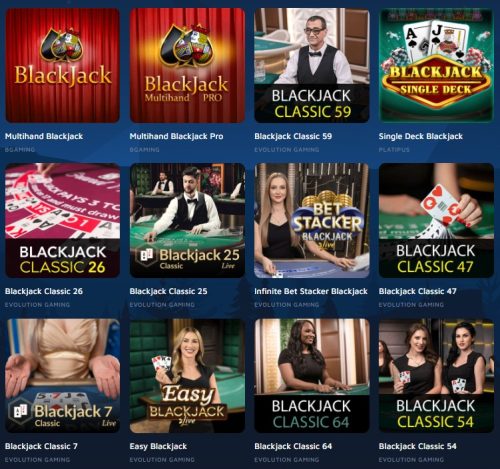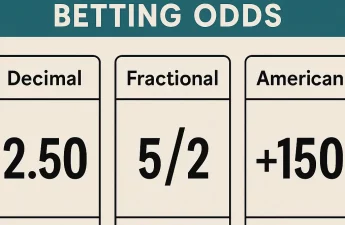Mastering blackjack requires understanding its core terminology. Hand ranks, face card values, and hand types – hard and soft – form the game’s building blocks. Betting strategies like insurance bets, doubling down, and splits introduce risk-reward dynamics. Table etiquette, from player behavior to card handling, shapes the ambiance. Combining basic strategy with advanced techniques like card counting can give players an edge. While inherent risks exist, informed decisions and bankroll management enable advantageous play. Dive deeper to access blackjack’s full depth and potential.
Basic Blackjack Terminology
Frequently, the game of blackjack utilizes a unique lexicon of terms that players must understand to fully engage with the gameplay. Among the most fundamental concepts are the hand ranks, which refer to the numerical value of the cards in your hand. This includes the face cards, which hold a value of 10, and the aces, which can be counted as 1 or 11 depending on the card composition of your hand.
Additionally, players need to familiarize themselves with the concept of hard and soft hands. Hard hands don’t include an ace, while soft hands do, allowing for more flexible play. Mastering this basic blackjack terminology is essential for making informed decisions and maximizing your chances of success at the tables.
Bet Types and Payouts
Beyond the fundamentals of hand ranks and hand types, understanding the various bet types and their corresponding payouts is another key aspect of blackjack. Insurance bets, for instance, allow you to hedge your main bet if the dealer is dealt a blackjack. While these bets pay 2:1, they carry a high house edge, so they’re generally not recommended unless the dealer is showing an ace.
Doubling down, on the other hand, is a strategic move where you double your initial bet in exchange for receiving just one more card. This can be a powerful play when you have a strong hand, but it’s essential to comprehend the optimal situations for doubling down.
Other common bet types include splits, where you divide a pair into two separate hands, and even money, which is a special payout offered when you have a blackjack and the dealer also has a blackjack. Mastering these bet types and their payouts is indispensable for maximizing your chances of success at the blackjack table.
Etiquette and Table Rules
Adhering to proper etiquette and understanding table rules is essential when playing blackjack. Table conduct is of utmost importance, as your actions can impact the gameplay and atmosphere for all players. Always be mindful of your player behavior, as it can either enhance or detract from the overall experience.
When at the table, avoid distracting or disrupting other players. Keep your conversations low, and refrain from using your phone excessively. Additionally, be courteous when handling your cards and chips, and avoid making sudden movements that could startle your fellow players. Remember, blackjack is a game of strategy and focus, so it’s important to maintain a respectful and considerate atmosphere.
Furthermore, familiarize yourself with the table rules, such as the appropriate time to place bets, when to hit or stand, and how to handle split or double-down decisions. Following these guidelines won’t only guarantee a smoother game but also demonstrate your respect for the dealer and other players.
Card Combinations and Strategies
Understanding card combinations and strategies is essential to becoming a skilled blackjack player. Card counting strategies, such as basic strategy and advanced counting techniques, allow you to gain an edge over the casino. By keeping track of the cards dealt, you can better predict the remaining cards and adjust your bets and plays accordingly.
Hand splitting techniques are also vital in blackjack. When you’re dealt a pair, you can choose to split them into two separate hands, doubling your bet but doubling your chances of winning. Knowing when to split pairs, such as aces or eights, can considerably improve your odds. Additionally, understanding how to handle soft hands (hands with an ace) and hard hands (hands without an ace) is key to making informed decisions.
Mastering card combinations and strategies takes time and practice, but the payoff is a more profitable and enjoyable blackjack experience.
Advantageous Blackjack Techniques
Card-counting techniques and strategic split/double-down decisions are two powerful tools that savvy blackjack players employ to gain an advantage over the house. Card-counting allows you to keep track of the cards dealt, enabling you to make informed choices about when to bet more or less. Progressive betting strategies, like the Martingale system, involve adjusting your wager based on previous outcomes, potentially amplifying your profits during winning streaks.
However, these advantageous blackjack techniques require significant time and effort to master. Card counting, in particular, can be challenging to execute accurately and discreetly, risking detection by vigilant casinos. Additionally, progressive betting can quickly deplete your bankroll if you encounter an unlucky losing streak. Ultimately, the effectiveness of these techniques depends on your skill, discipline, and the specific rules and conditions of the game. Responsible players should always gamble within their financial limits and be aware of the inherent risks involved.
Essential Blackjack Terms and Actions
- Hit – A request for another card from the dealer. Players signal this by tapping the table or scraping their cards lightly across the felt. This action increases your hand total but risks going over 21 and busting.
- Stand – The decision to keep your current hand and decline additional cards. Players indicate this by waving their hand horizontally over their cards. This finalizes your hand’s value.
- Double Down – A strategic move where you double your initial bet in exchange for receiving exactly one more card. This is often advantageous when your initial two-card total is 11, as the next card has a good chance of producing a strong hand.
- Split – When dealt a pair (two cards of the same rank), you can split them into two separate hands by placing an additional bet equal to your original wager. Each new hand receives a second card and can be played independently.
- Soft Hand – Any hand containing an ace counted as 11. These hands offer flexibility since the ace can later be counted as 1 if needed to avoid busting. For example, Ace-6 (soft 17) can become 7 if you hit and receive a 10.
- Hard Hand – A hand either without an ace, or where the ace must be counted as 1 to avoid busting. For instance, Ace-6-10 is a hard 17 because the ace must count as 1 to avoid exceeding 21.
- Push – When your hand ties with the dealer’s hand. In this case, you neither win nor lose your bet, and it’s returned to you.
- Bust – When your hand’s total exceeds 21, resulting in an immediate loss regardless of the dealer’s hand. This is why careful consideration of hit/stand decisions is crucial.
- Insurance – A side bet offered when the dealer’s upcard is an ace. It costs half your original bet and pays 2:1 if the dealer has blackjack. However, this bet typically favors the house over the long term.
- Natural – Also known as “blackjack” – a two-card hand totaling 21 (an ace plus a 10-value card). This usually pays 3:2 and beats all hands except another natural.
- Surrender – An option to forfeit half your bet and retire from the hand instead of playing it out. This is only available as your first decision and can be advantageous with certain poor starting hands against strong dealer upcards.
- Hole Card – The dealer’s face-down card, which remains hidden until all players have completed their hands. Understanding probable hole card values is crucial for strategic decision-making.
- Upcard – The dealer’s exposed card, dealt face-up and visible to all players. This card is critical for basic strategy decisions, as it indicates the dealer’s potential final hand.
- Penetration – The percentage of cards dealt before reshuffling. Higher penetration (dealing deeper into the deck) benefits card counters by providing more information about remaining cards.
- Basic Strategy – The mathematically optimal way to play every possible hand against every possible dealer upcard. This strategy minimizes the house edge and forms the foundation for advanced play. It specifies exactly when to hit, stand, double down, split, or surrender based on your cards and the dealer’s upcard.
Conclusion
Mastering the lingo of blackjack is the key to accessing its strategic depths. Immerse yourself in this comprehensive guide, and you’ll be armed with the knowledge to navigate the felt-covered battlefield like a seasoned pro. Embrace the cryptic vernacular, for it holds the secrets to outsmarting the house and stacking the odds in your favor. Blackjack is a game of wits, and this dictionary is your weapon of choice.




